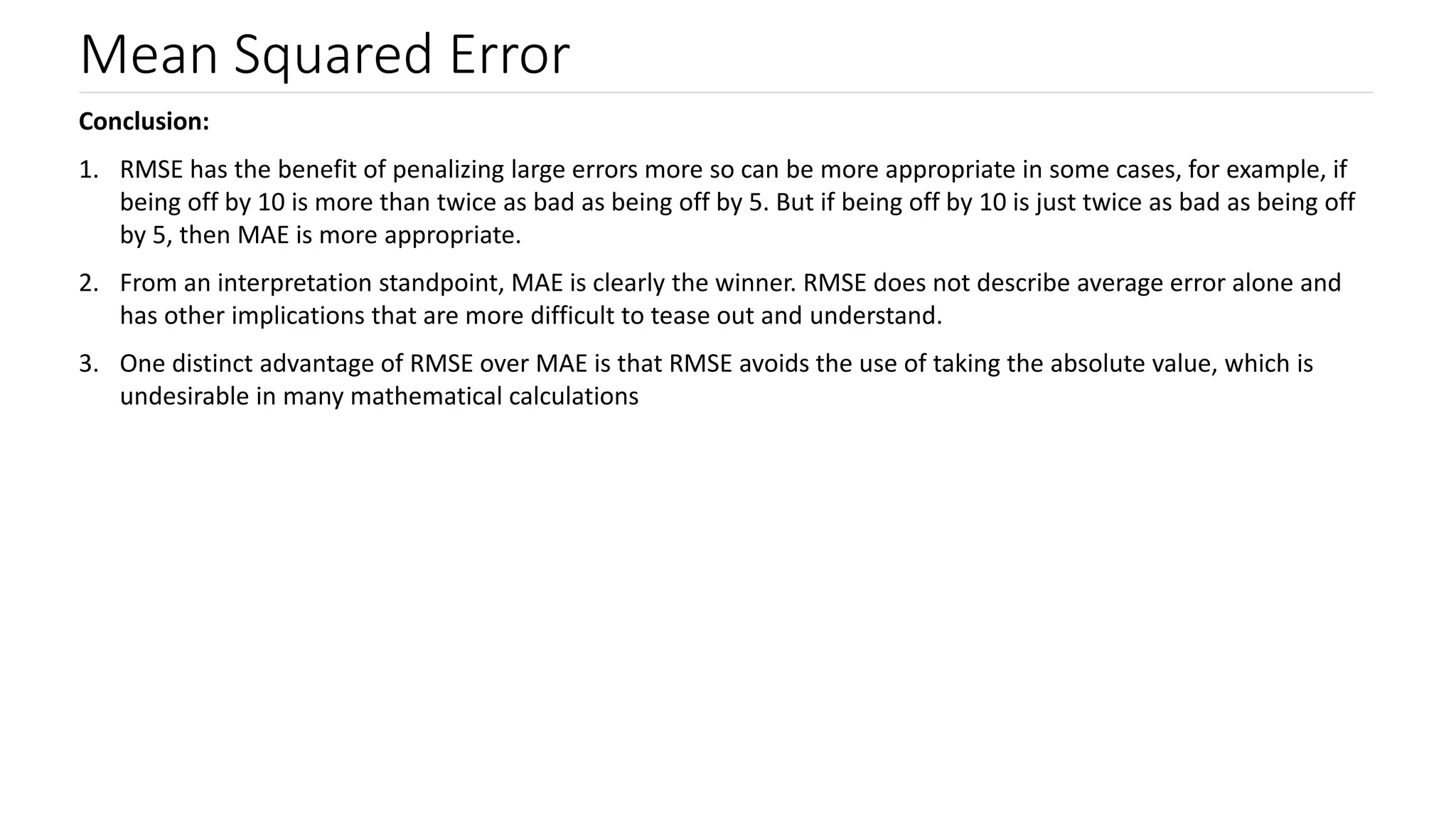This document discusses various performance metrics used to evaluate machine learning models, particularly for classification problems, including confusion matrix, accuracy, precision, recall, specificity, F1 score, log loss, and area under the curve (AUC). It emphasizes the importance of selecting appropriate metrics based on the context of the problem, detailing scenarios where minimizing false positives or false negatives is crucial. Additionally, it provides mathematical formulations and practical examples to illustrate the application and significance of these metrics.


































